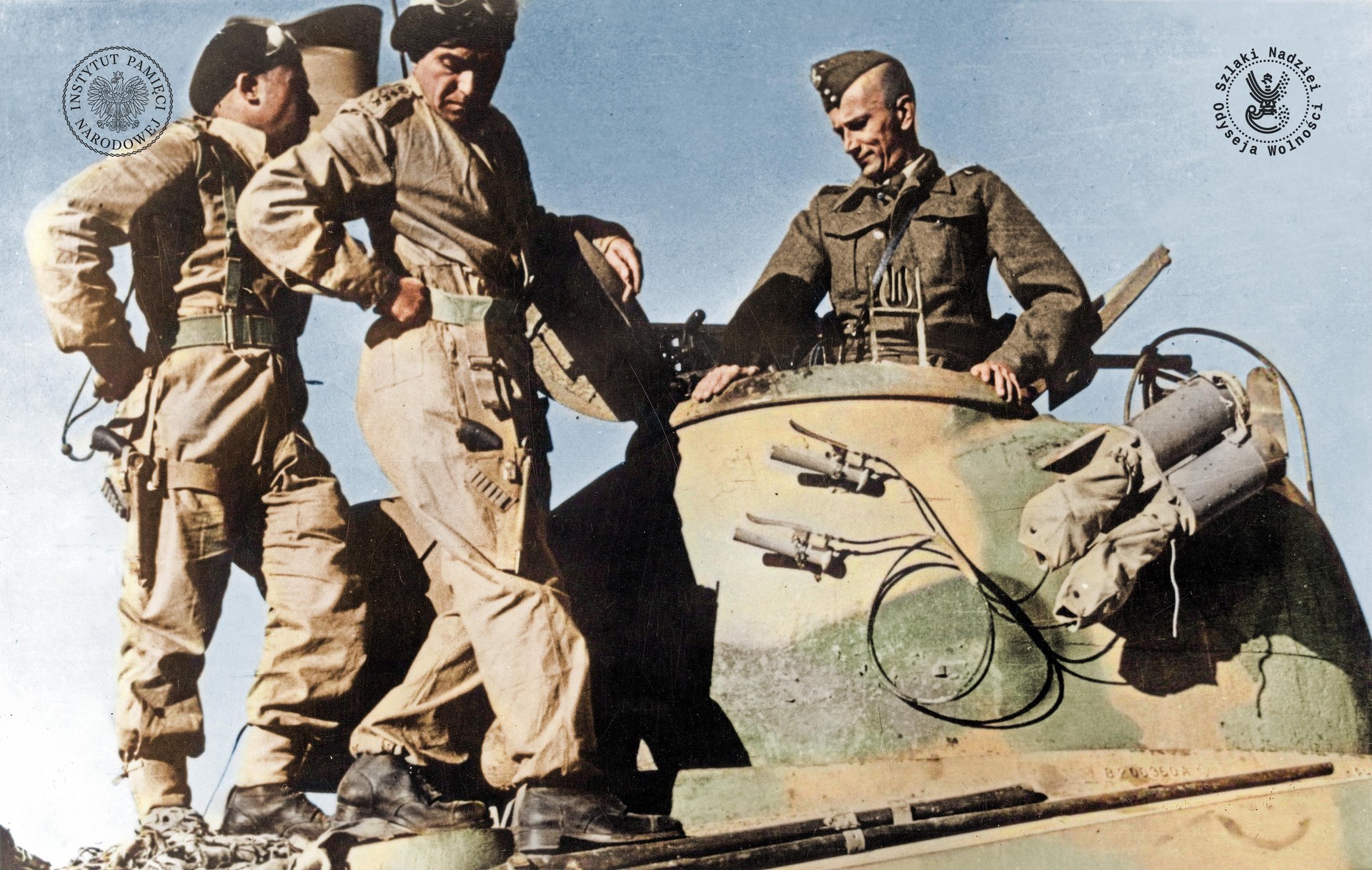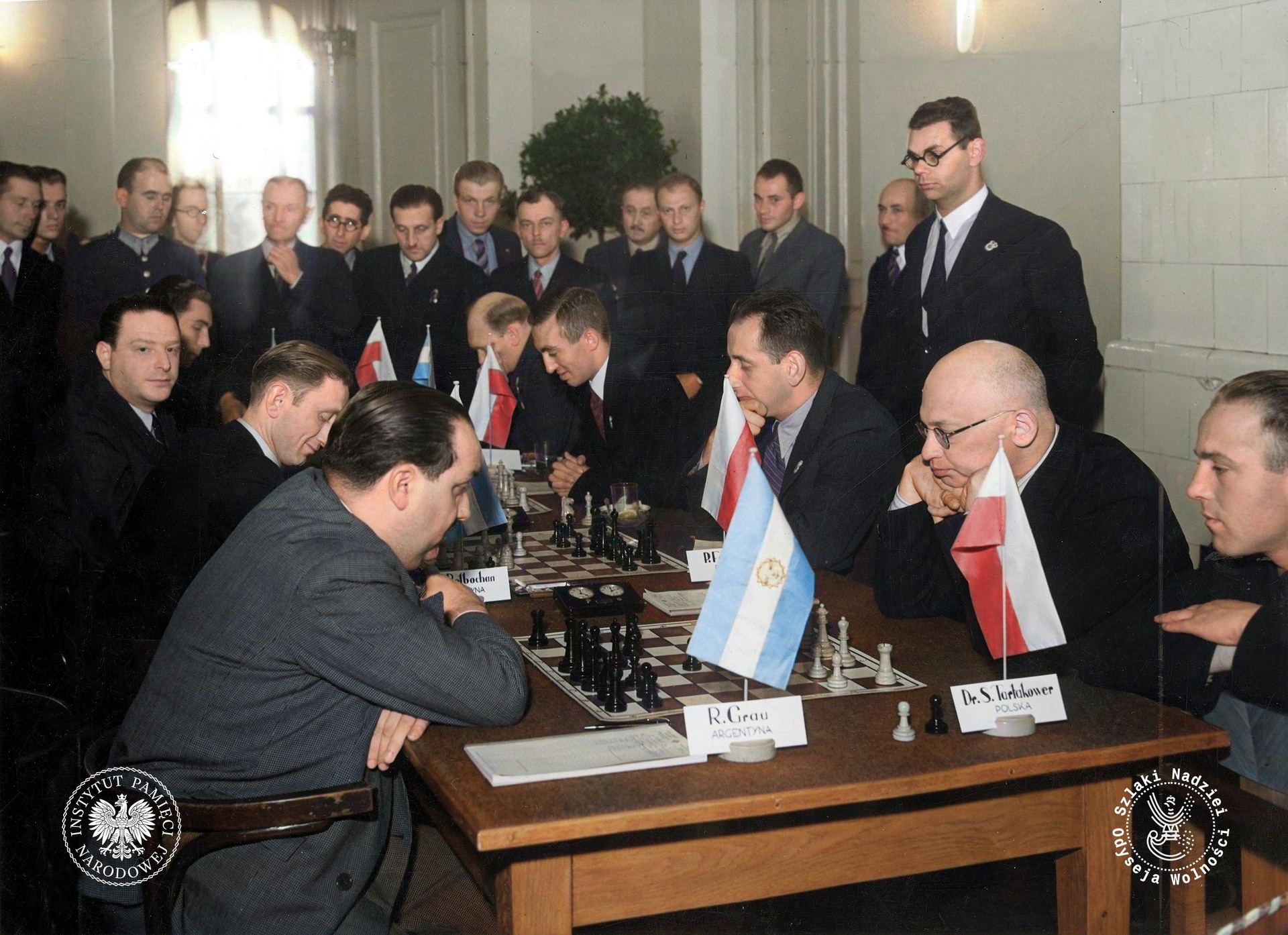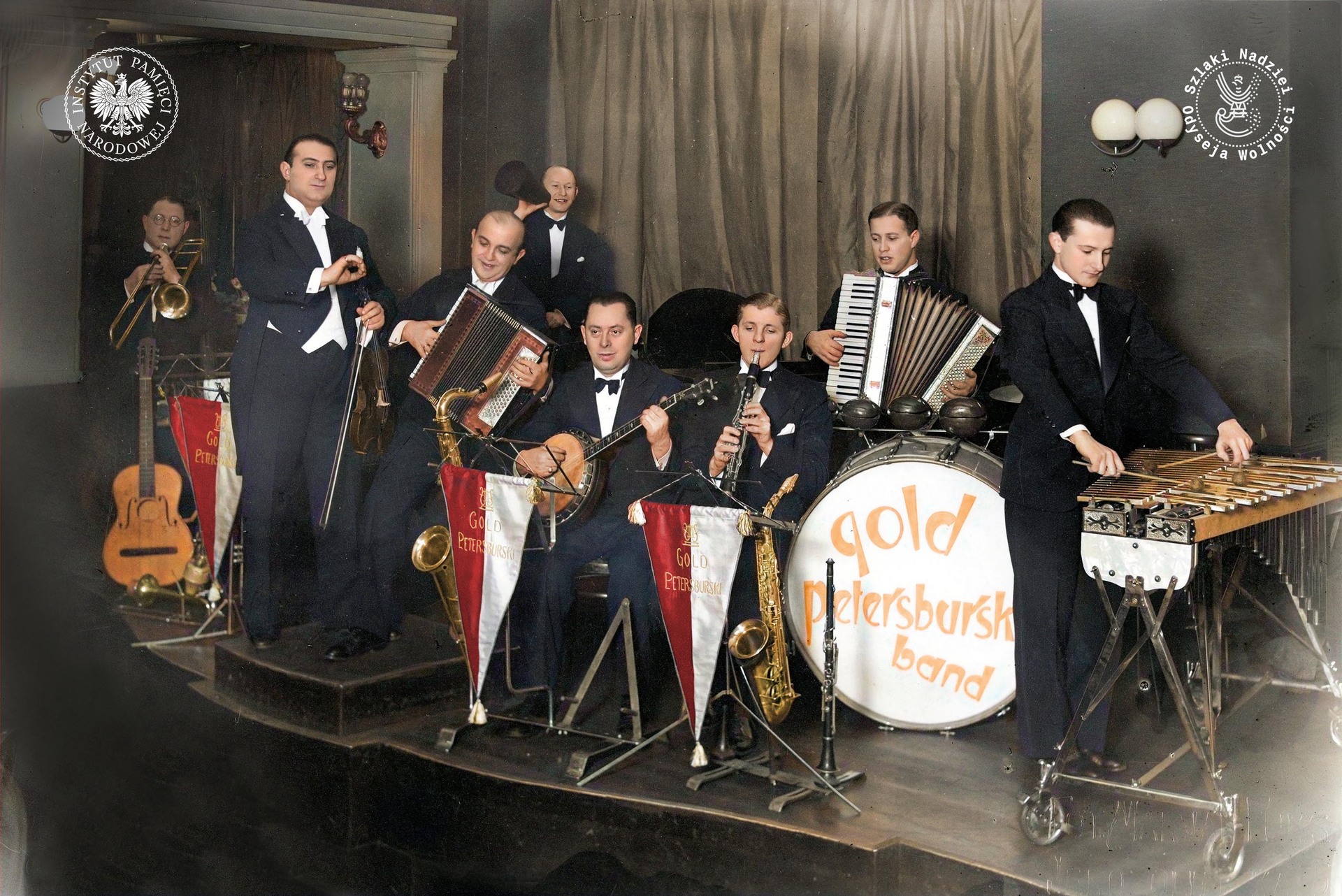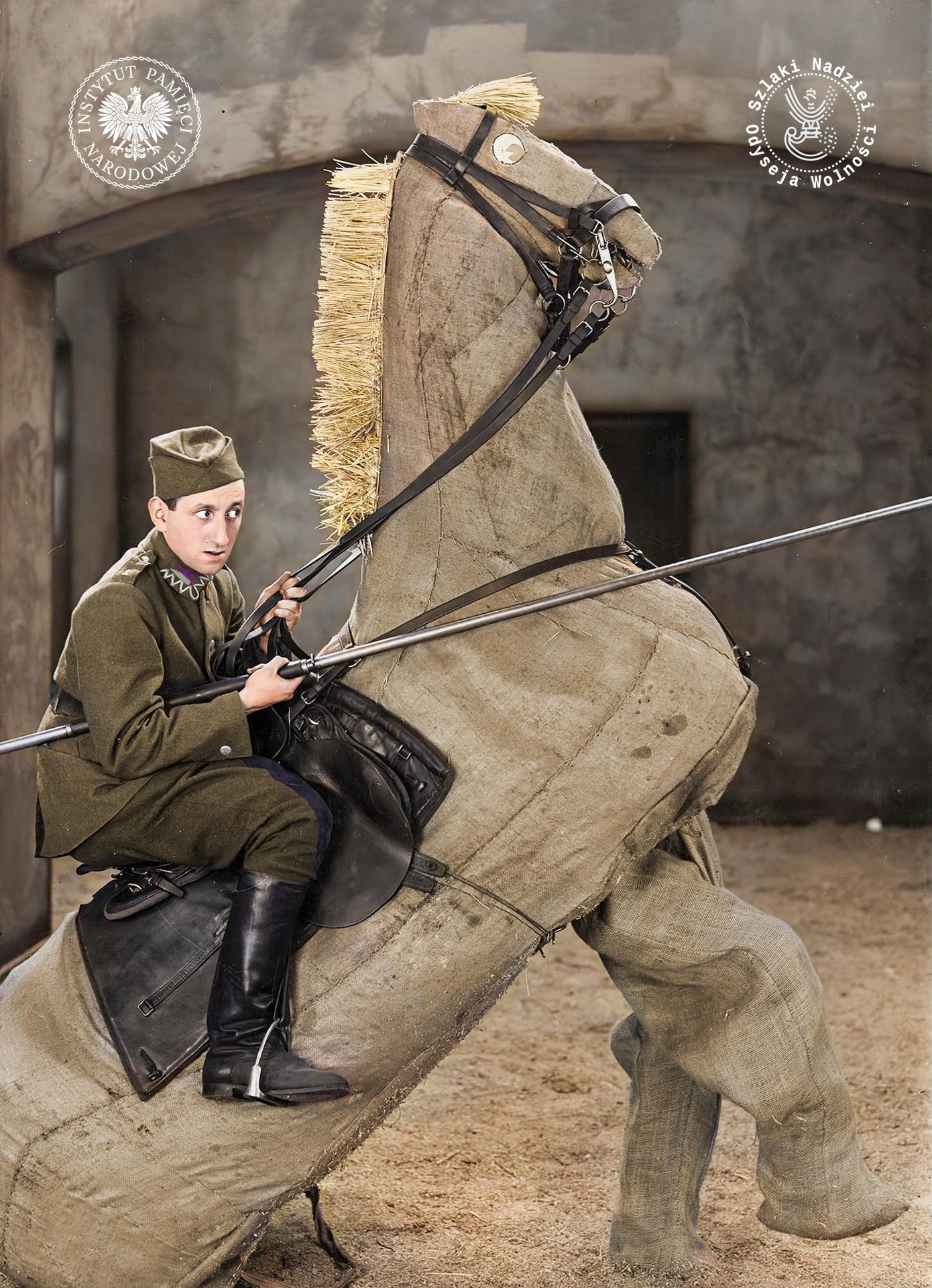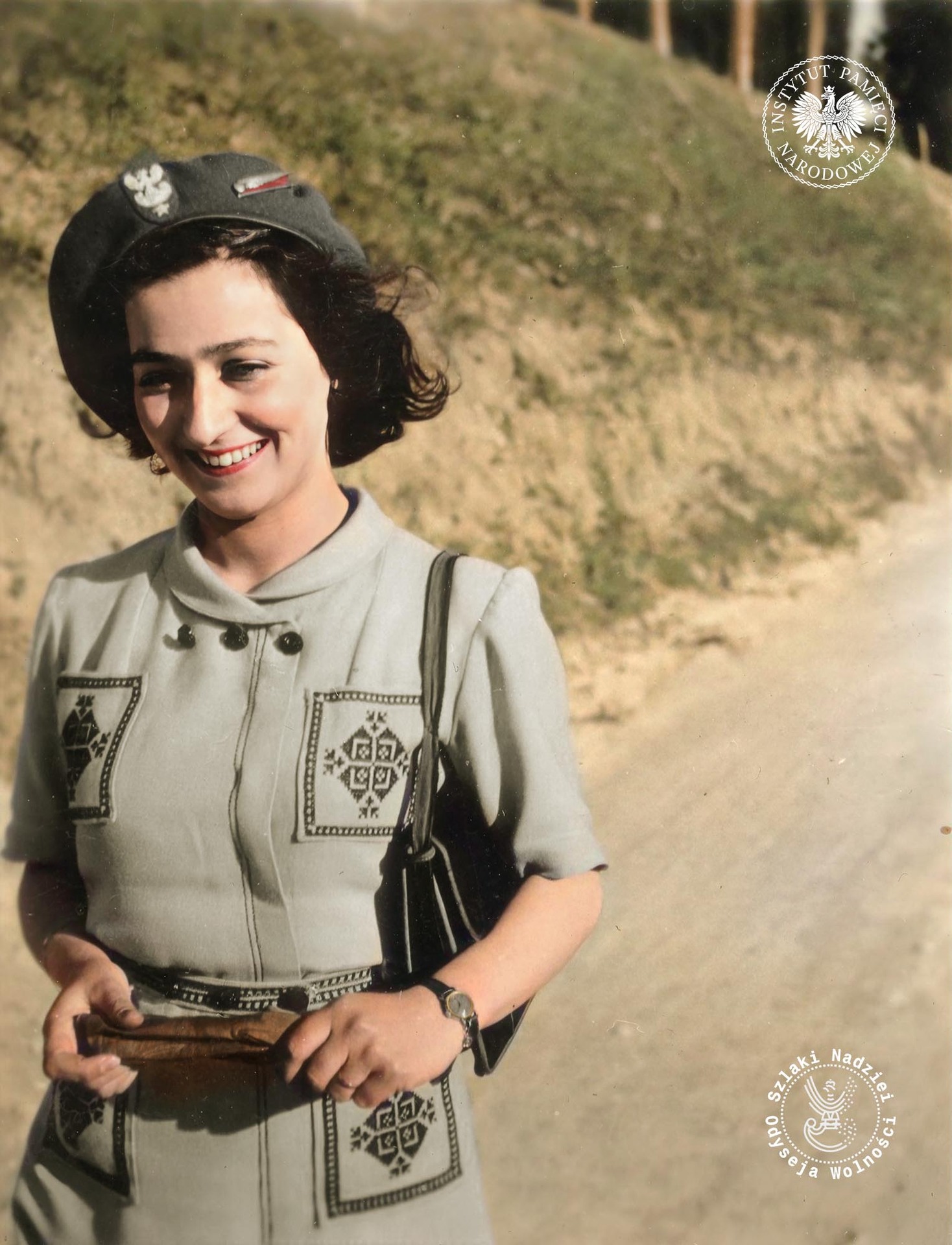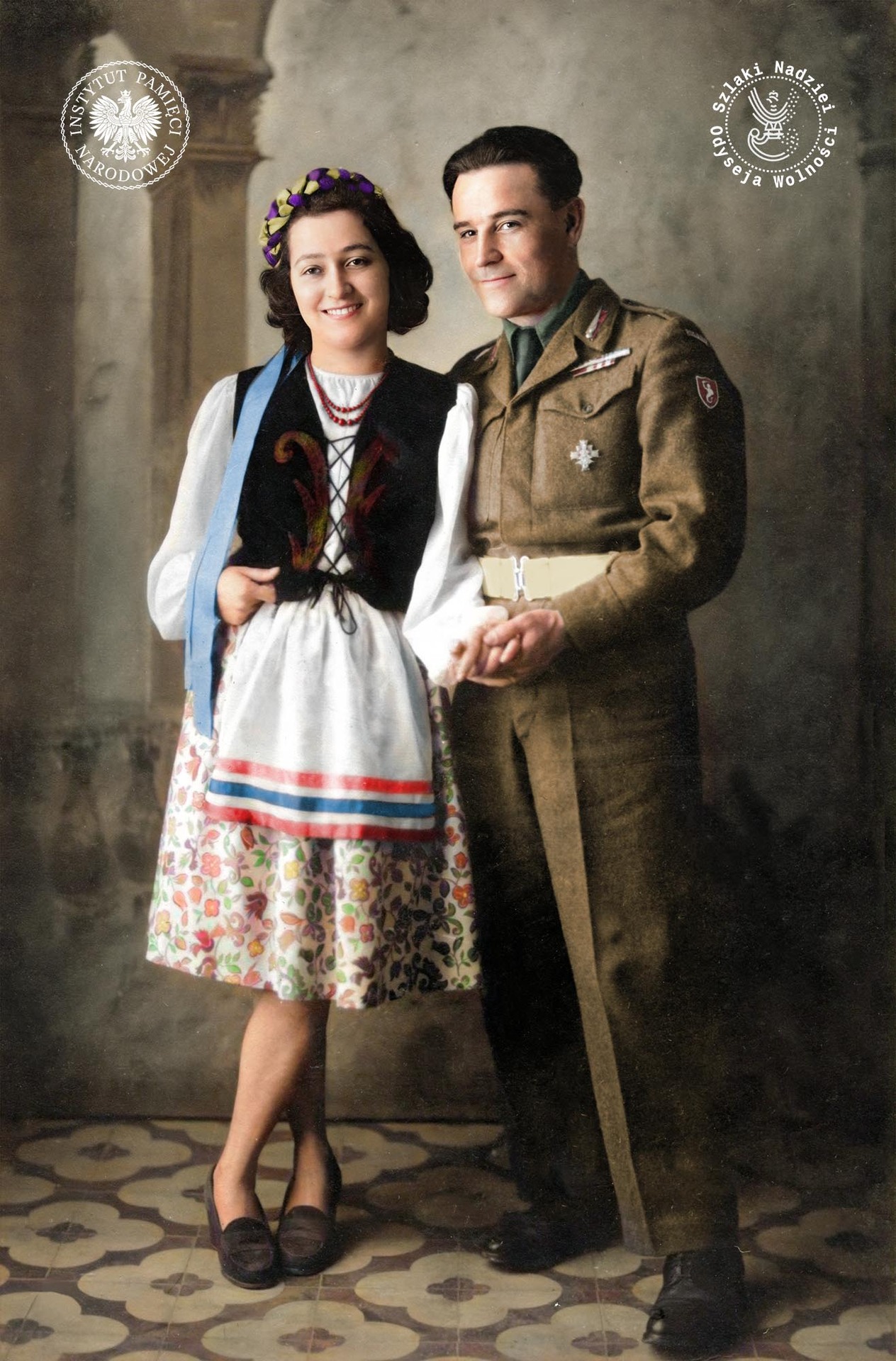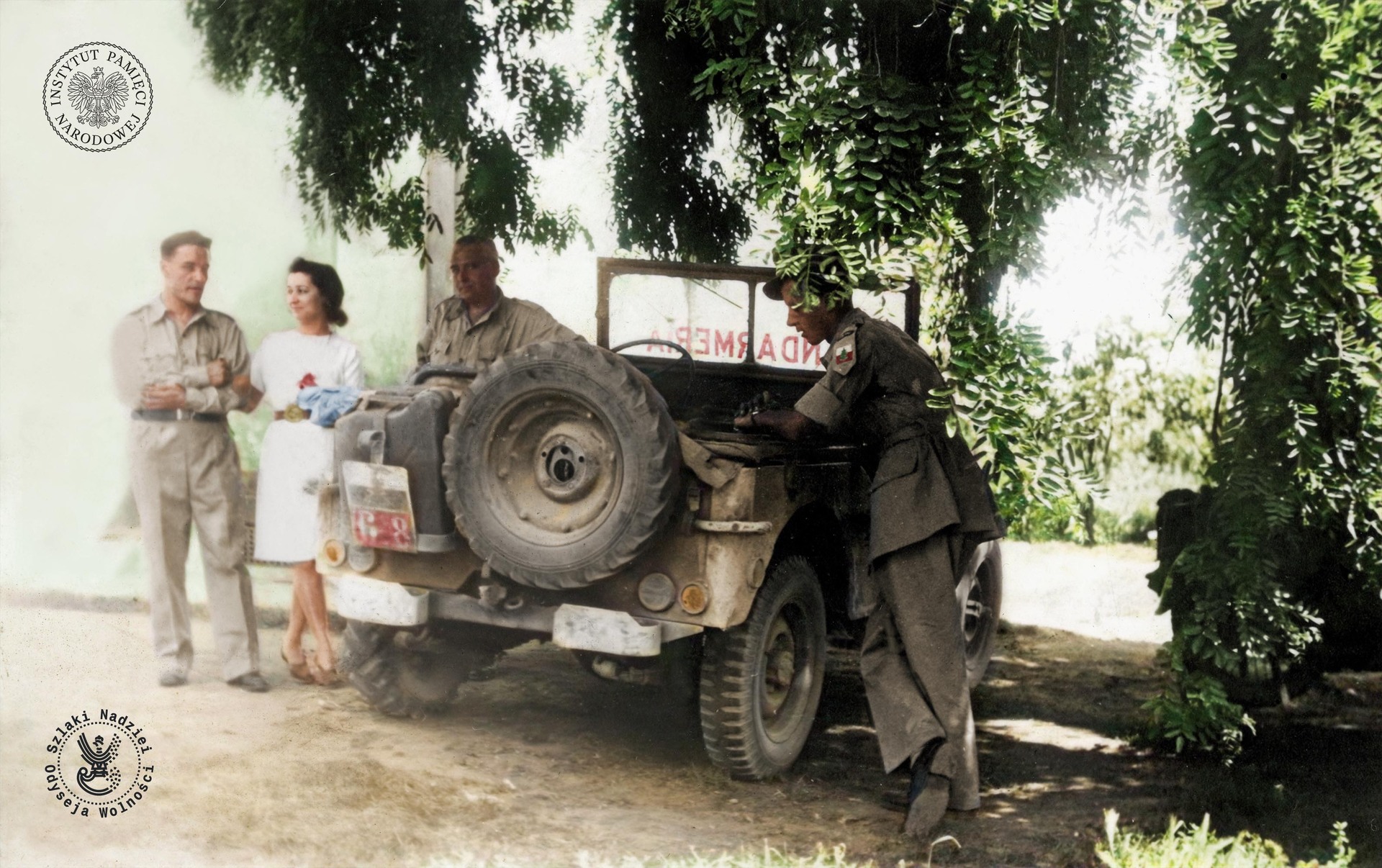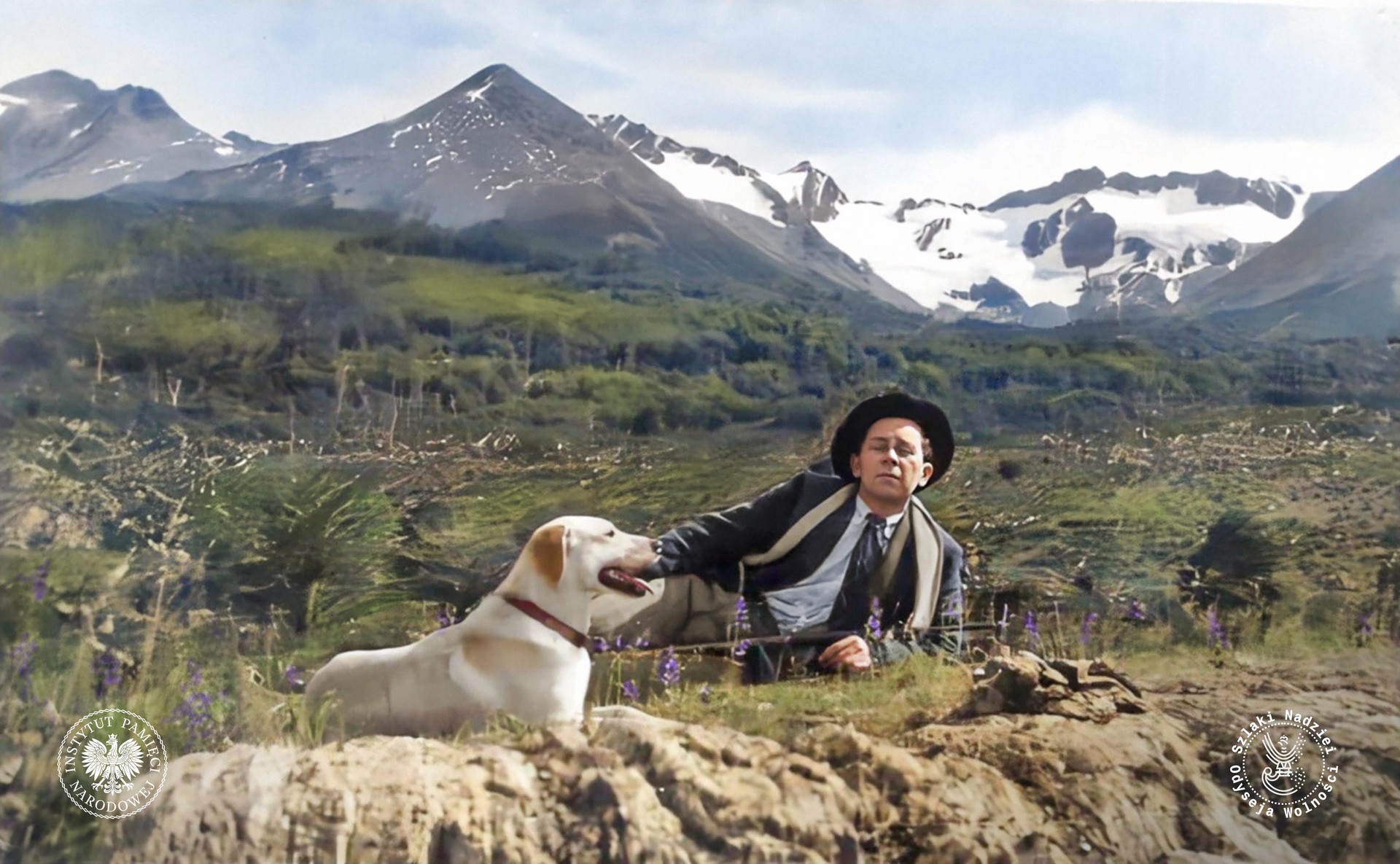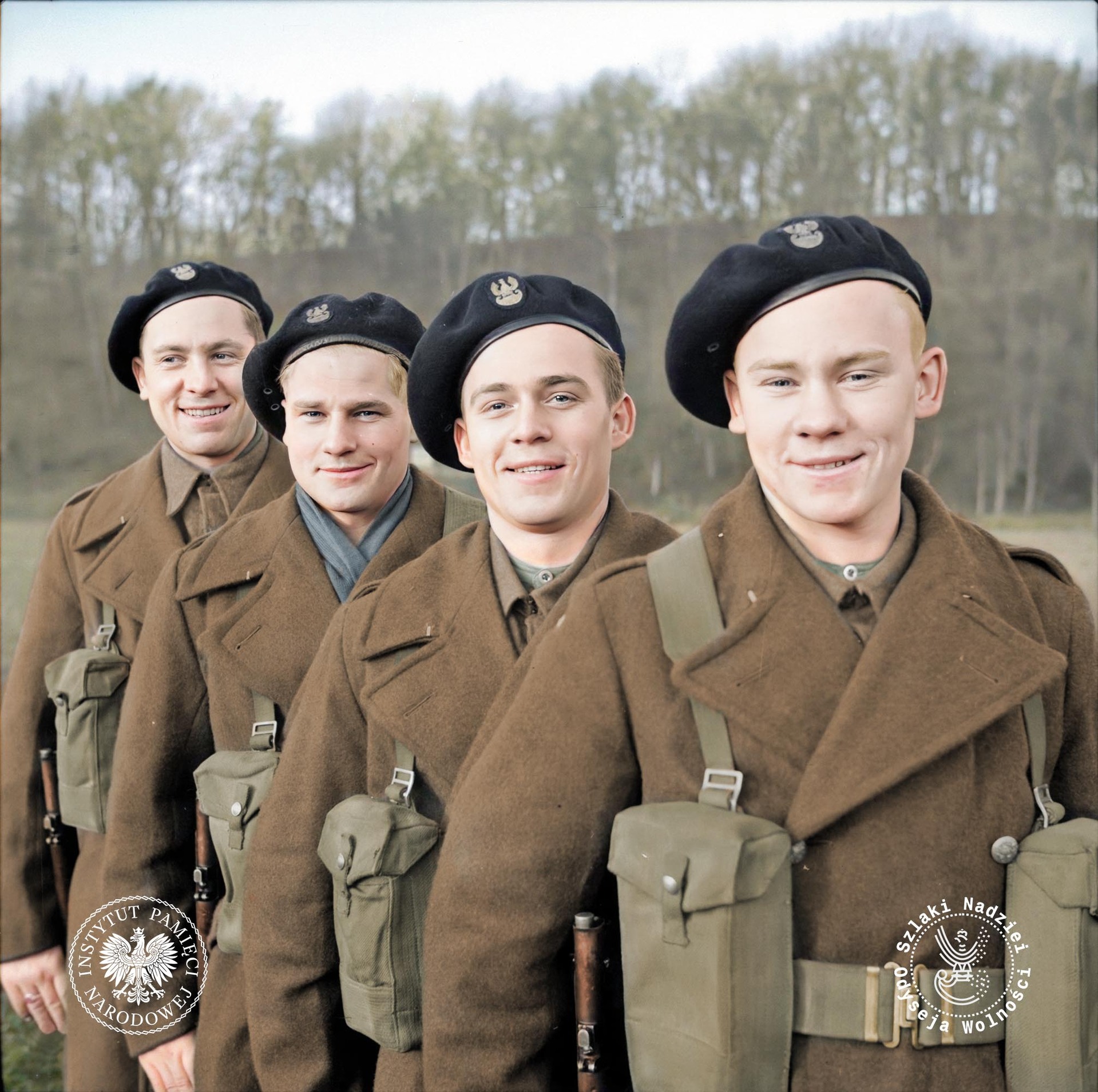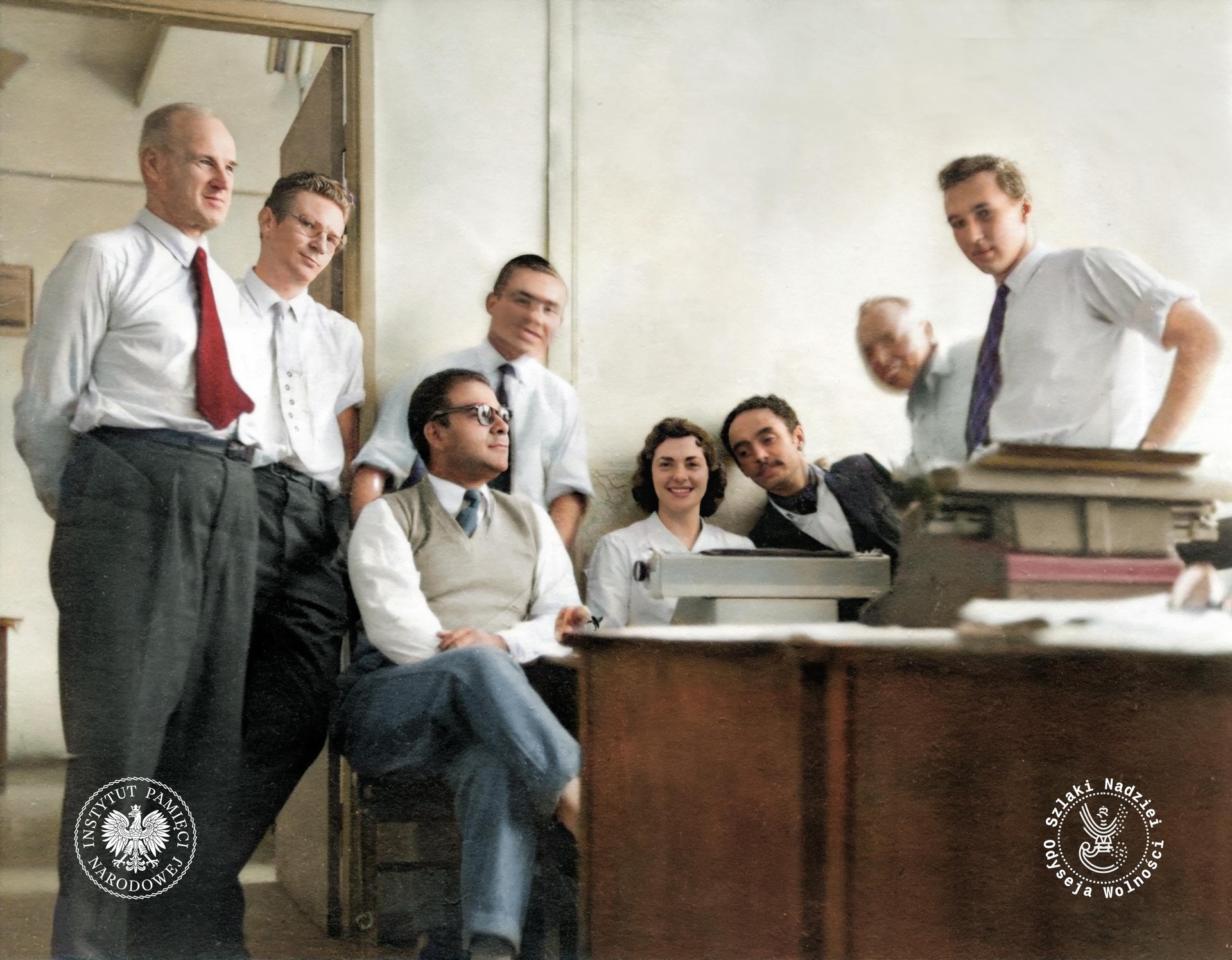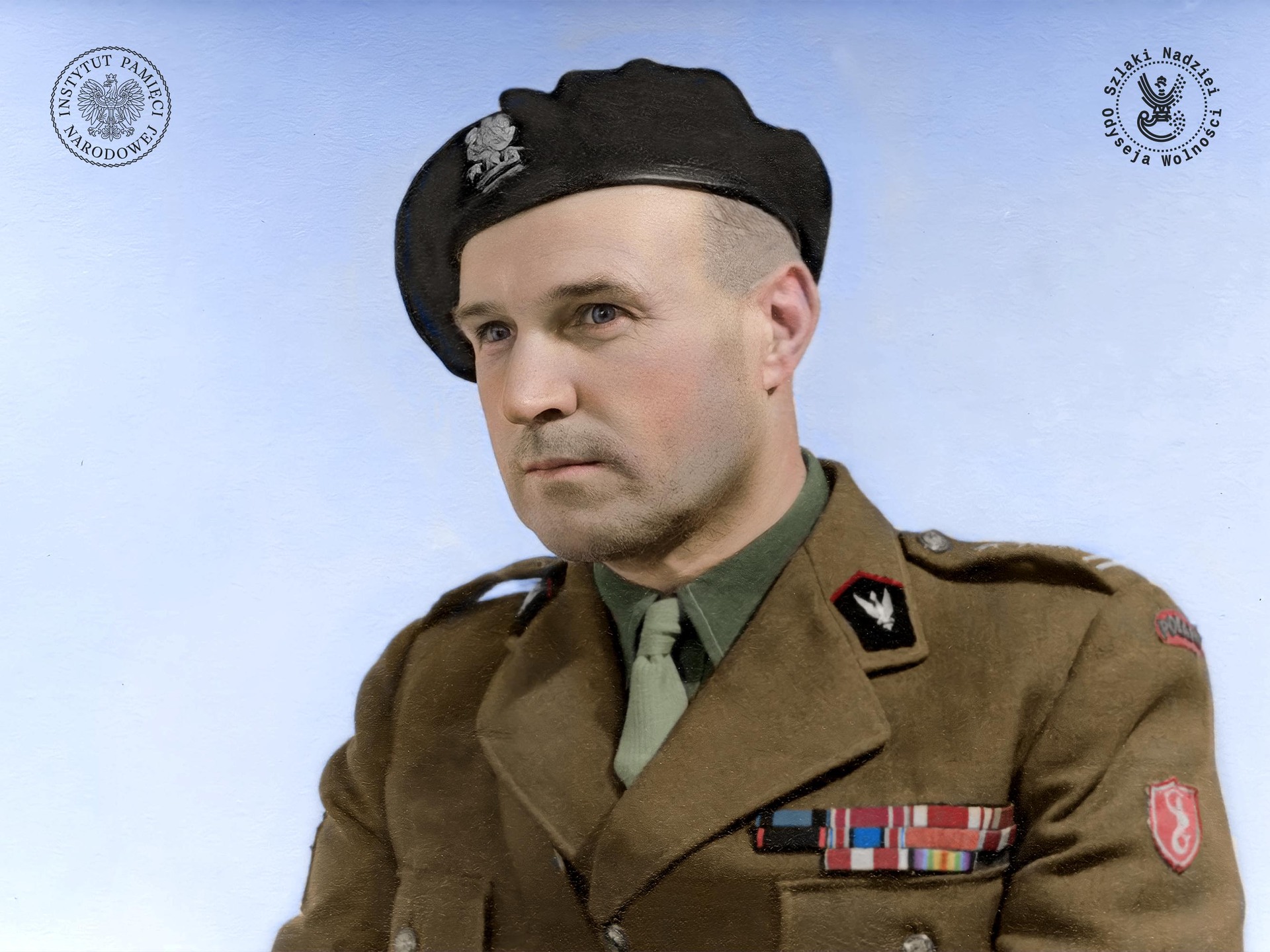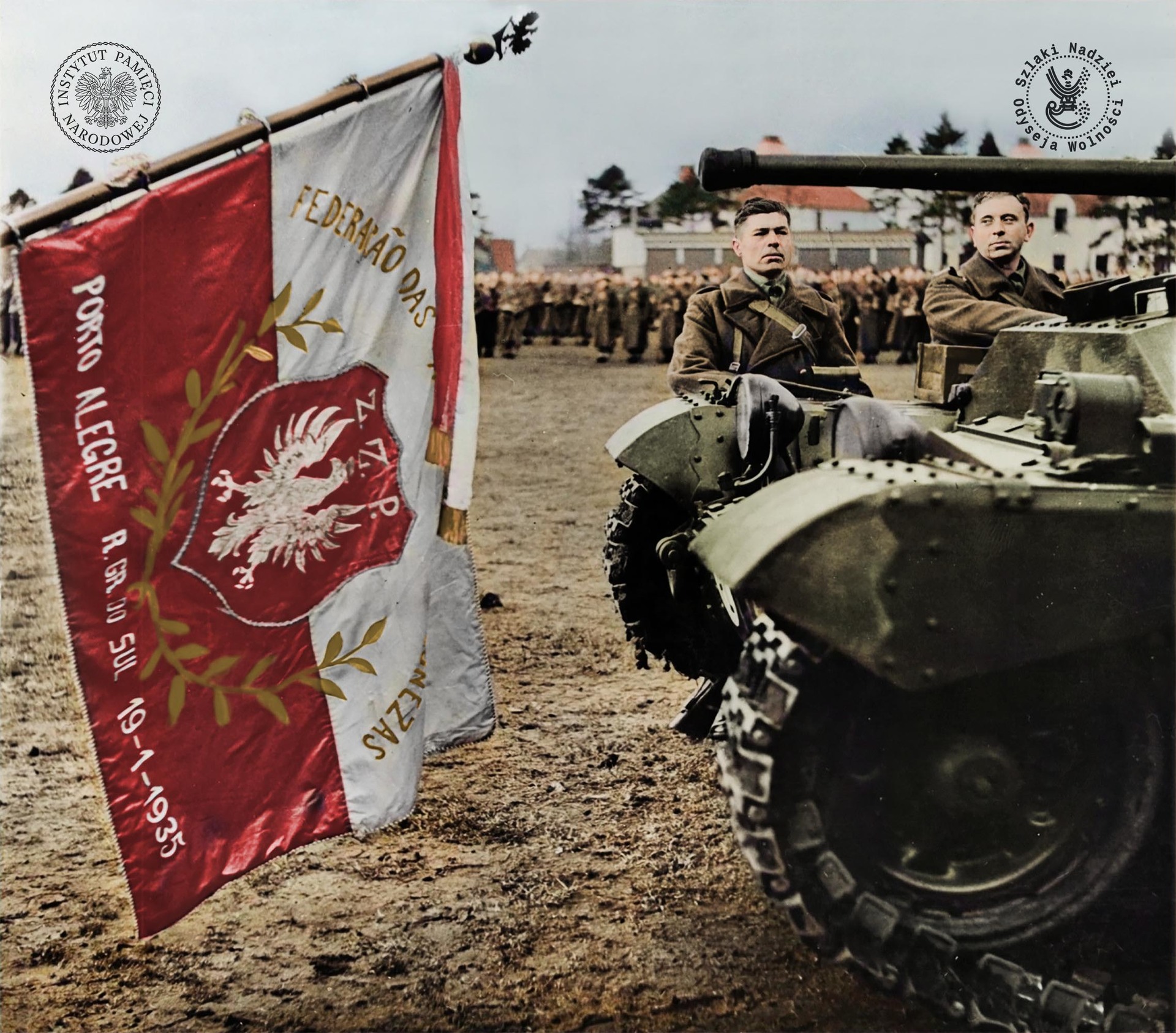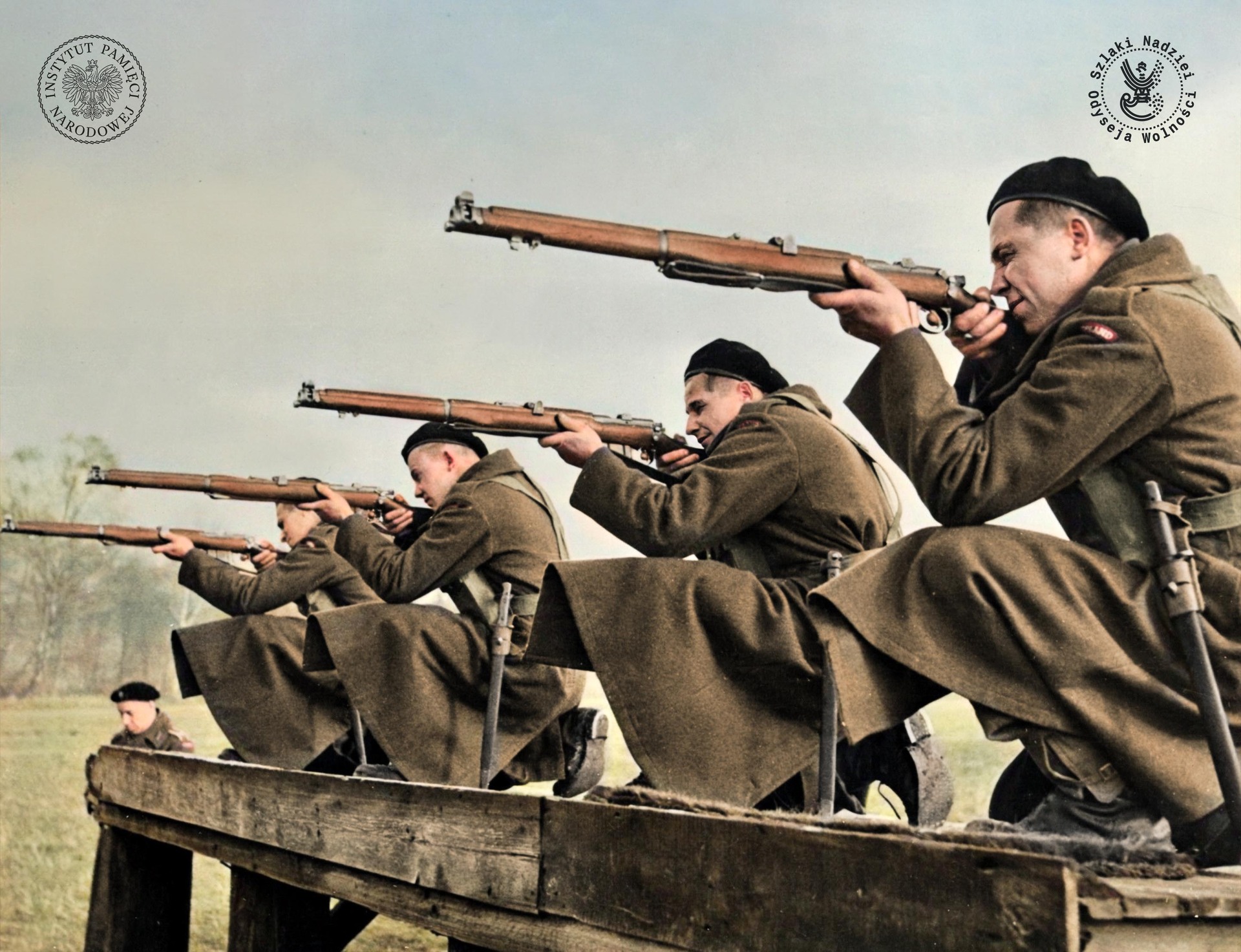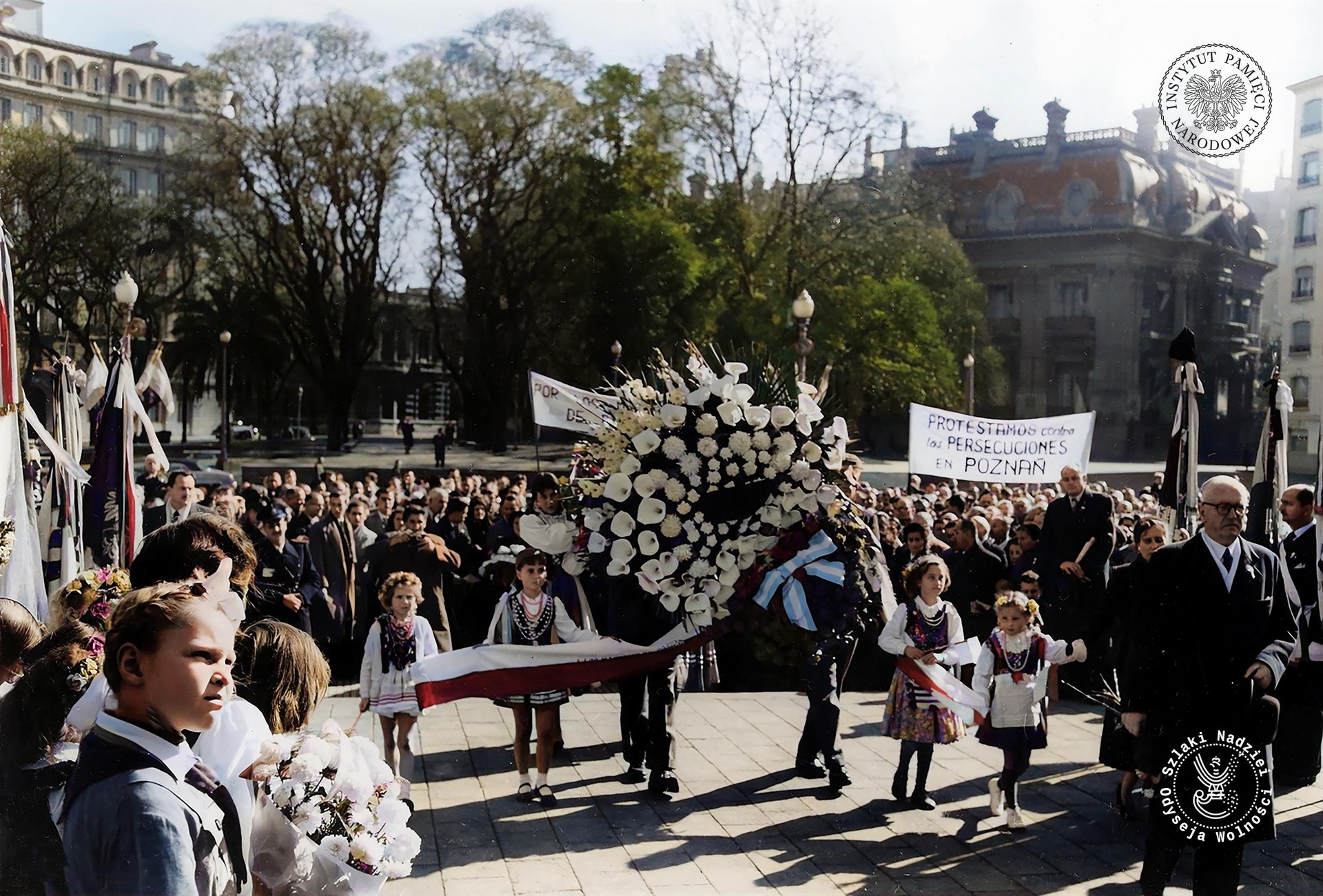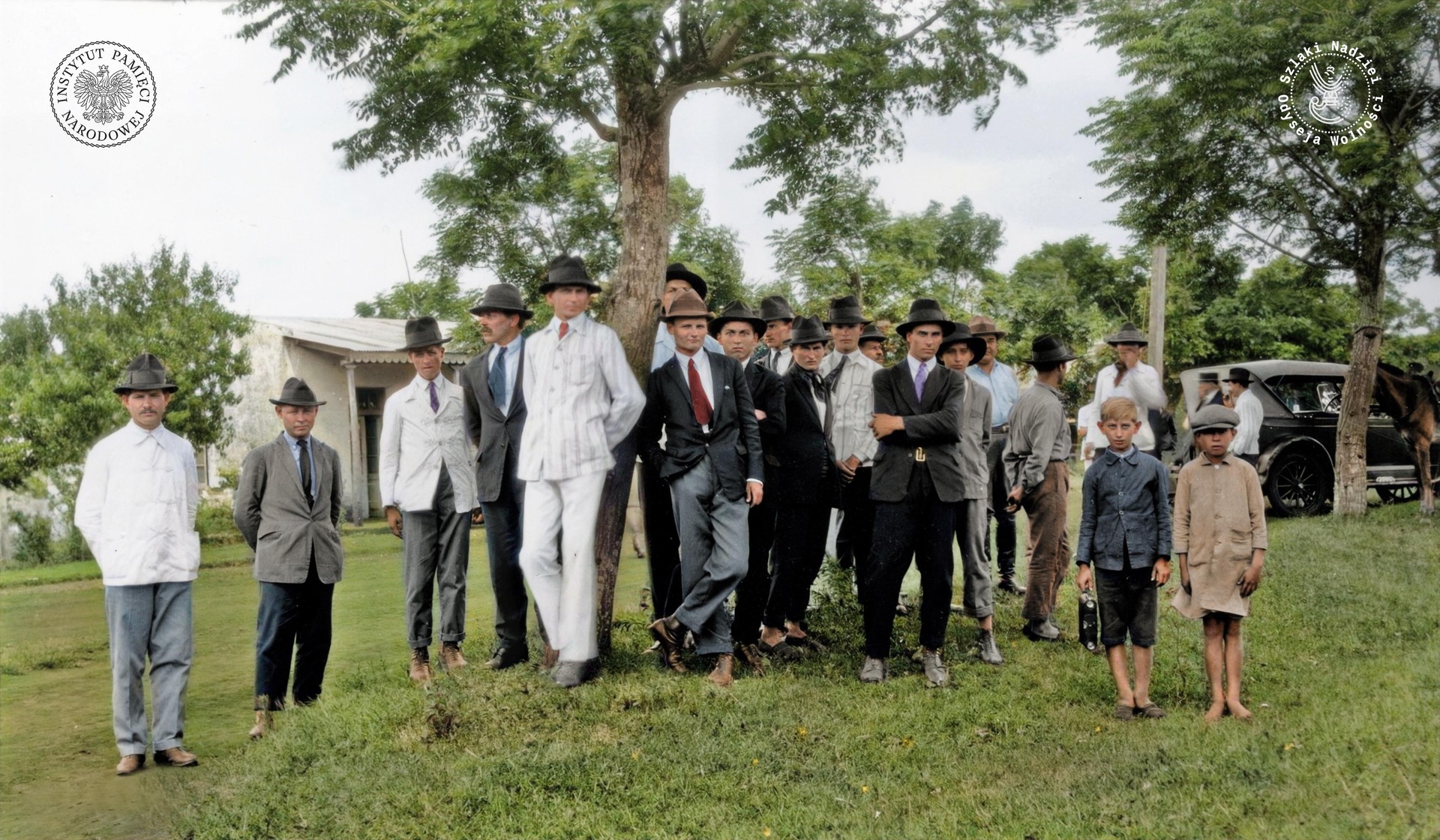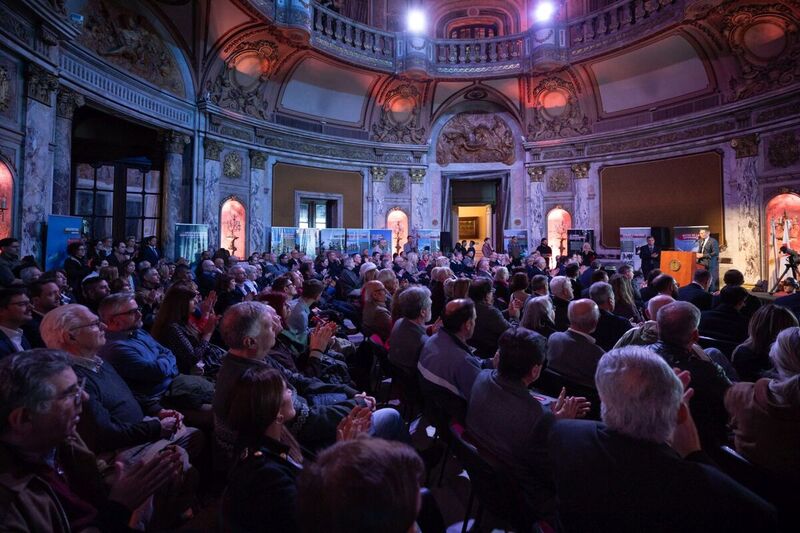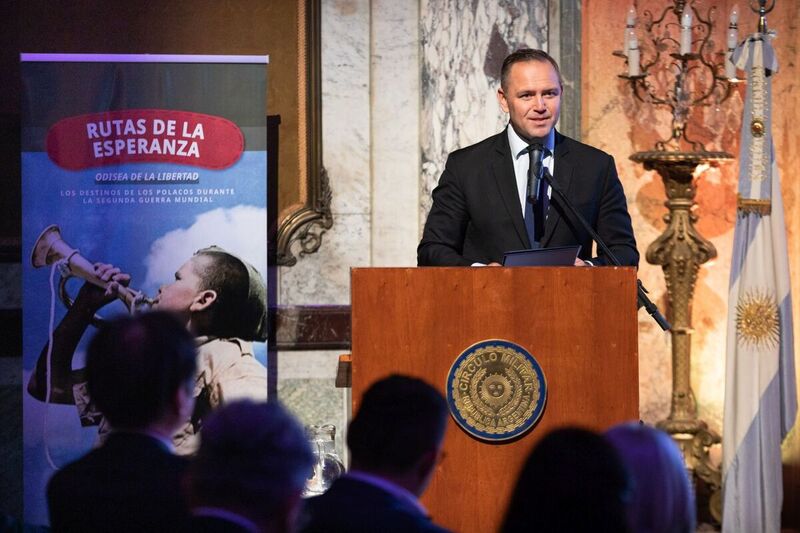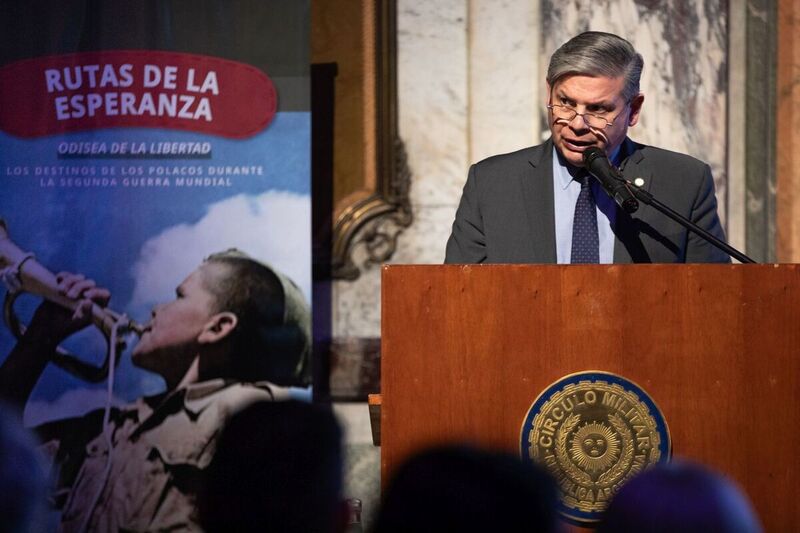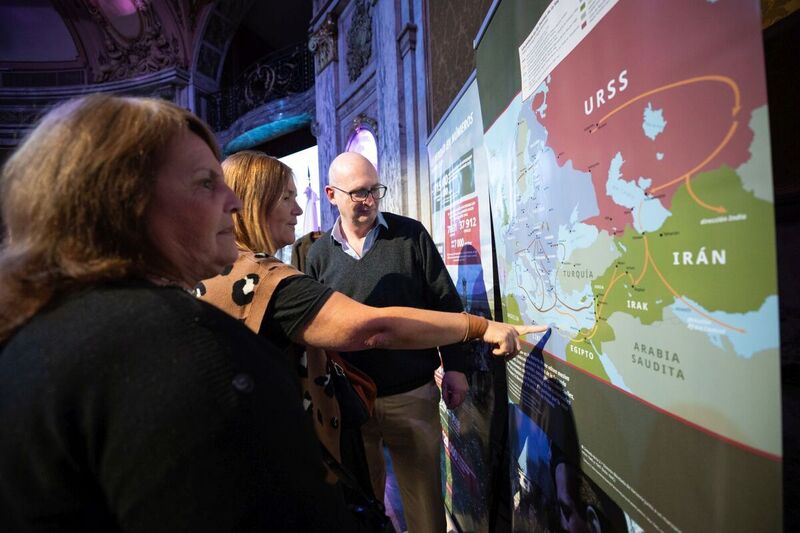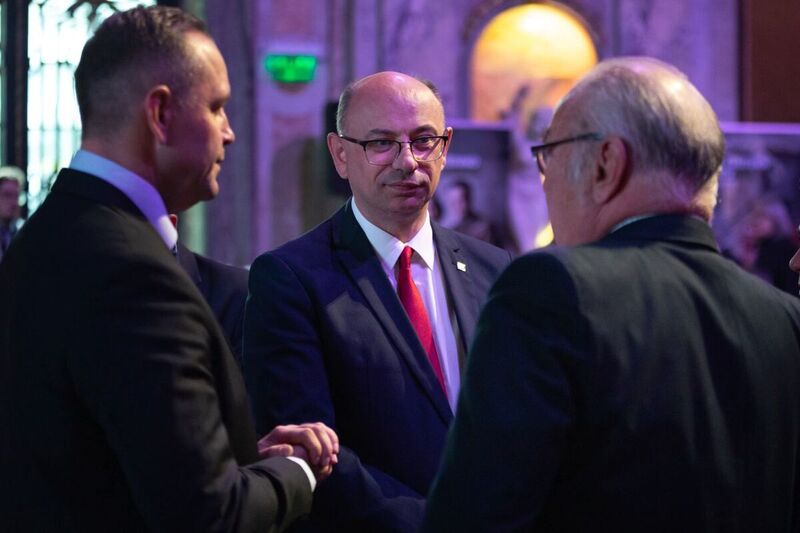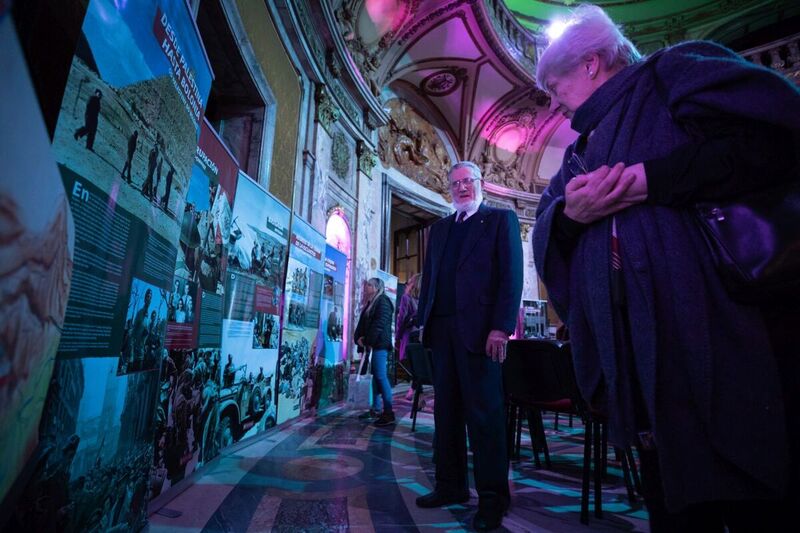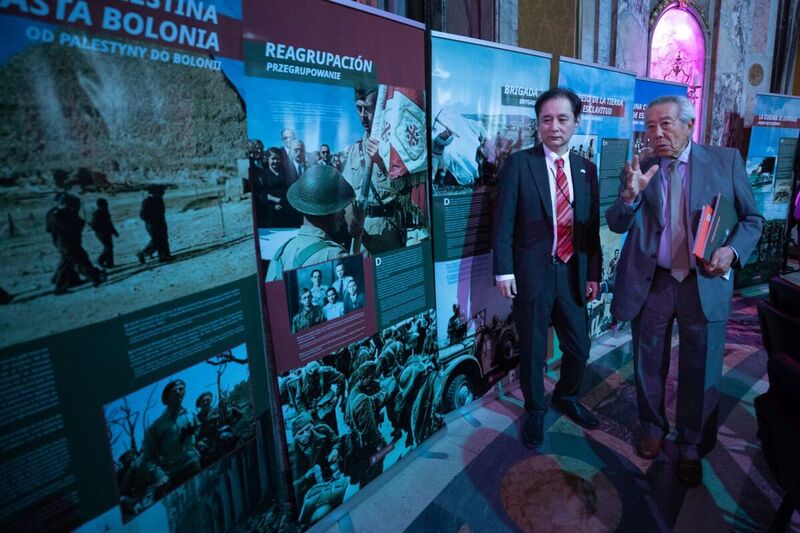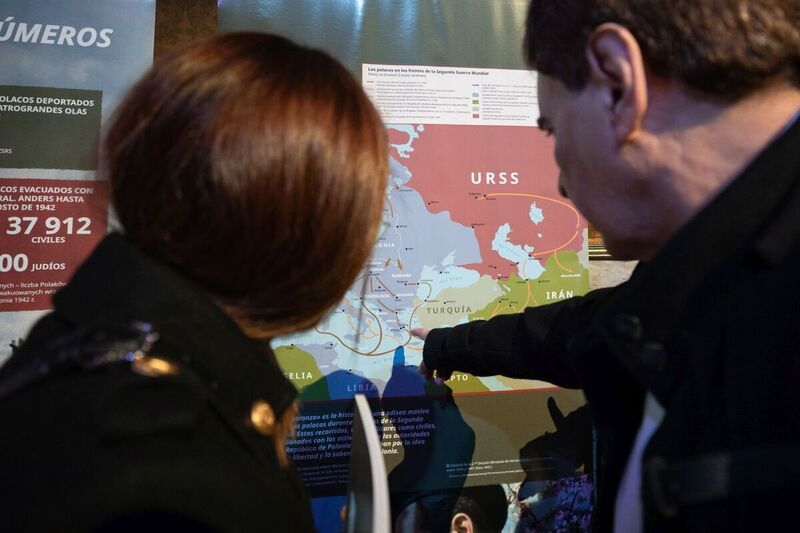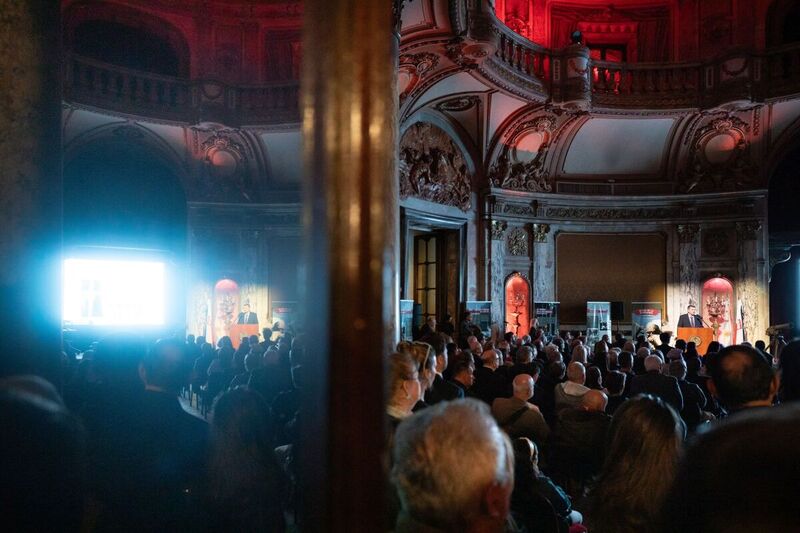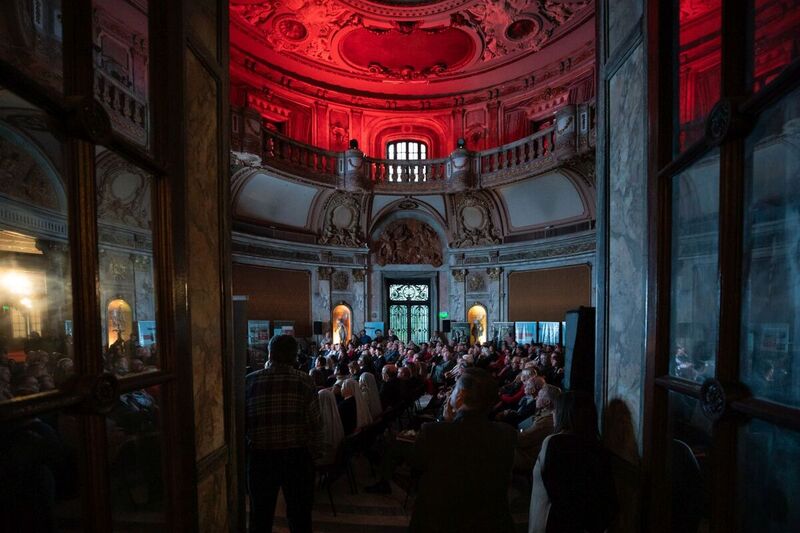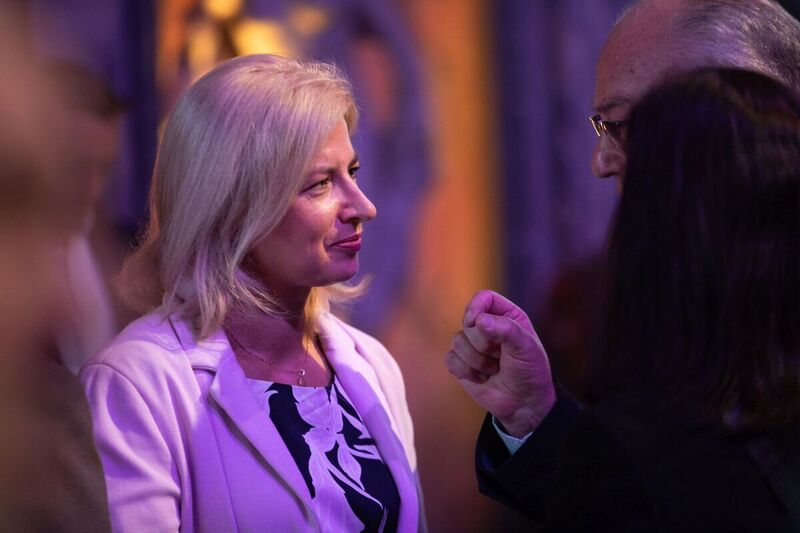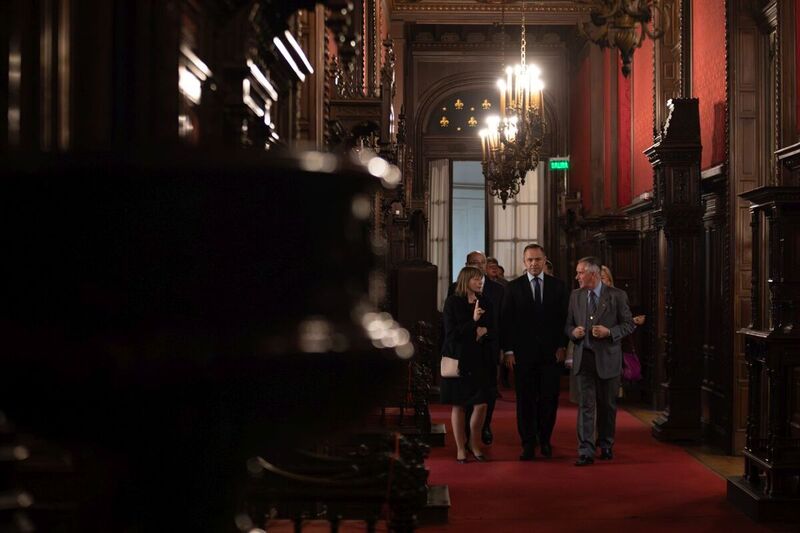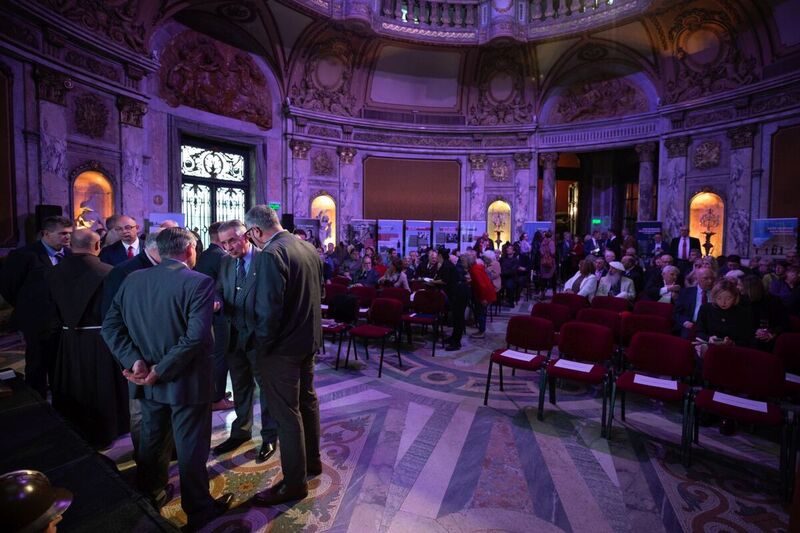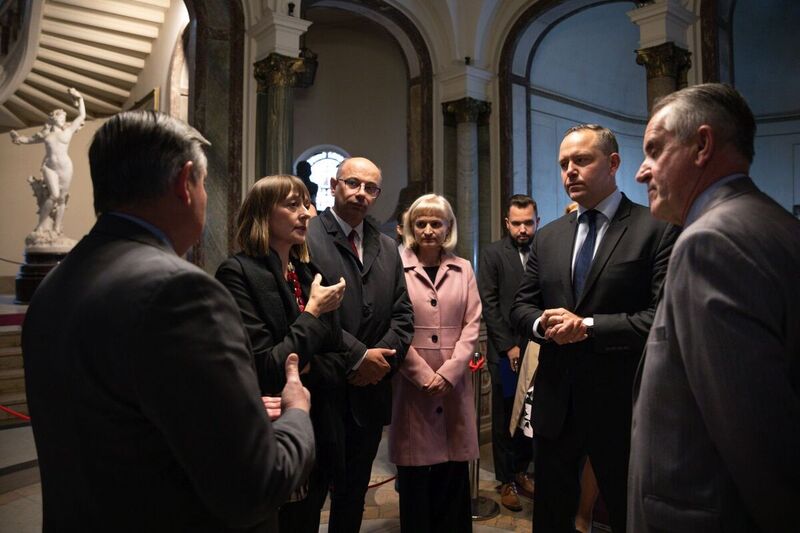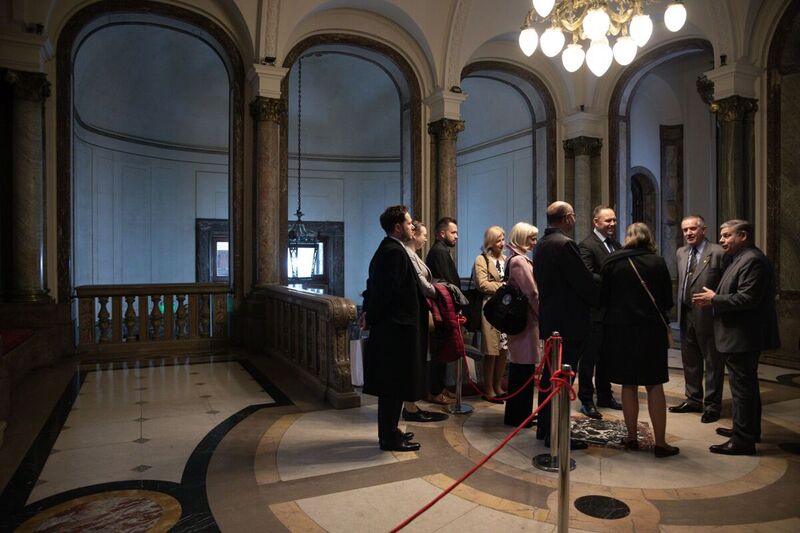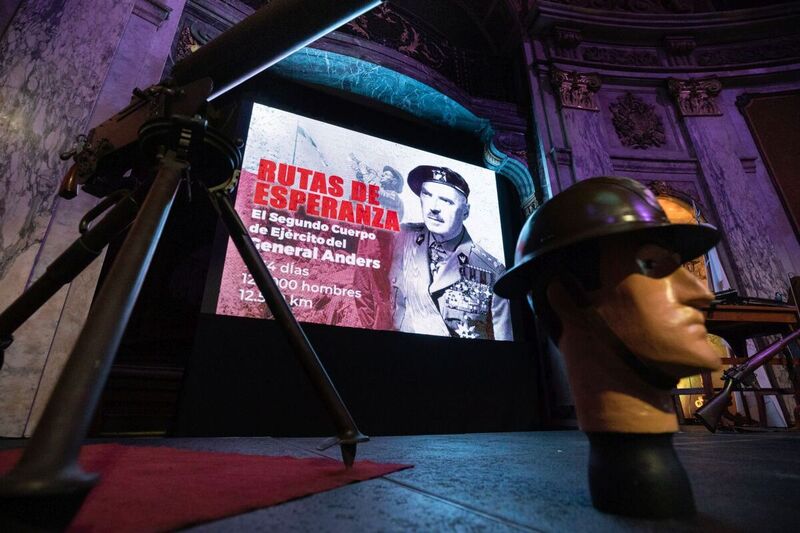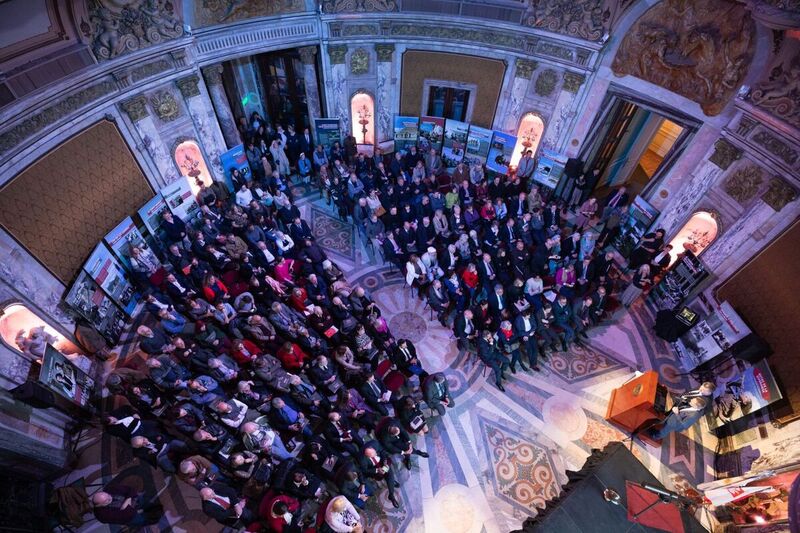The historic Palacio Paz in Buenos Aires hosted an opening of the exhibition "Trails of Hope. The Odyssey of Freedom." It was a tribute to the soldiers of the Polish Armed Forces who fought for freedom during World War II.
The event gathered many distinguished guests, Ambassadors of Belgium, Japan, El Salvador, Ireland, Morocco, as well as diplomats from United States, Ukraine, Croatia and Peru. The Institute of National Remembrance was represented, among others, by President Karol Nawrocki, Ph.D., Deputy President Mateusz Szpytma, Ph.D., and the Director of the IPN Office of International Cooperation Agnieszka Jędrzak.
I am well aware that all the guests of honour gathered at today's ceremony are people to whom such values as freedom, honour and sovereignty are very dear. I know that you understand the scale of the sacrifice of everyone who fights for their country, whether during World War II or today. The exhibition you are about to see touches on this very subject, said the IPN President.
The opening of the exhibition in Argentina aims not only to commemorate the role of Polish soldiers in history, but also to emphasize the bonds linking Poland and Argentina, which for many decades was a place of refuge and hope for many Poles seeking freedom.
Since the early 19th century Argentina was a place of refuge and settlement for Poles fleeing from their homeland enslaved by the partitioning powers. Soldiers of Napoleon, as well as of subsequent Polish uprisings – the November Uprising (1831), the January Uprising (1863) – found their place here.
Poles began arriving in Argentina in the late nineteenth century in search of a better way of life. Their numbers steadily increased until they reached more than 120,000 right before the onset of war. More Poles landed in Argentina during WWII; it is estimated that there were approximately 200,000 of our compatriots in Argentina during WWII.
The end of WWII and Poland's loss of independence triggered a new wave of migration. Many Polish Armed Forces personnel from the West arrived in Argentina. They refused to return to their communist-ruled homeland. They discovered a new place to live in Argentina. Many of them played and continue to play important roles in its social, cultural, and economic life. The exhibition tells the story of a few Poles who resided in Argentina throughout the last century, outlined Karol Nawrocki, Ph.D.
After the speeches of the Polish Ambassador Aleksandra Piątkowska, the IPN President Karol Nawrocki, Ph.D., and the Deputy President of the Union of Poles in Argentina Andrzej Chowańczak, the guests had the opportunity to see the exhibition. A number of panels were devoted to Poles who settled in Argentina and their contribution to the country's culture and history.
Wiktor Ostrowski took part in an expedition to Aconcagua in 1934, during which a new route to the continent's highest peak was discovered. He served in the Polish army in 1939, was interned in Lithuania and sent to a prisoner-of-war camp in the USSR. With the Polish Army under General Władysław Anders, he fought at Monte Cassino, among other places. After the war, he stayed in Africa and settled in Buenos Aires in 1947. In 1975, he returned to Poland. The photo shows Wiktor Ostrowski looking at a Sherman tank from the 4th Armoured Regiment "Scorpion", Egypt, 1943. (Photo: NAC)
Hamilton-Russell Cup Chess Olympiad in Warsaw. Poland-Argentina chess match. Visible on the right side of the table are the Polish chess players Ksawery Tartakower (second from right), Paulin Frydman (third from right), Mieczysław Najdorf (fourth from right), visible on the left side of the table are the Argentine chess players Roberto Grau (first from left), Jul Bolbochan (second from left), Pleci (third from left), Warsaw 1935. (Photo: NAC)
Jerzy Petersburski came from a Warsaw family of Jewish musicians. During World War II, he found himself in the USSR, from where he made his way to the Middle East with the Polish Army under General Władysław Anders. In Cairo, he hosted radio broadcasts for Polish soldiers. Between 1947 and 1967, he created in South America (Argentina, Brazil, Venezuela). In 1967, he returned to Poland. The photo shows the dance music band of Artur Gold and Jerzy Petersburski (third from left) during a performance, Warsaw, 1922–1939 (Photo: NAC)
Kazimierz Krukowski was a Polish actor of Jewish origin. After the outbreak of war, he initially performed in the territories occupied by the Soviet Union, then joined the Polish Army under General Władysław Anders. He ran a military theatre and worked with Polish Armed Forces teams in Iraq, Palestine, Egypt and Italy. After the war, he remained in exile – staying, among other places, in Argentina, where he ran the El Nacional theatre with Jerzy Petersburski. He returned to the country in 1956. (Photo: NAC)
On the day World War II ended, Silvia Valli married Stefan Szymula, a Polish soldier who was stationed in her hometown in Italy. After the war, they moved to Argentina. The photo shows Silvia Szymula wearing her husband's beret, Urbino, Italy, 1945. (Photo from the collection of Silvia Szymula, digital reproductions at the Ignacy Domeyko Polish Library in Buenos Aires, photo courtesy of the KARTA Centre Foundation)
Silvia Szymula (née Valli) and Stefan Szymula, Dicomano, Italy, 1945. (Photo from the collection of Silvia Szymula, digital reproductions at the Ignacy Domeyko Polish Library in Buenos Aires, photo courtesy of the KARTA Centre Foundation)
Silvia Valli and Stefan Szymula on their wedding day, Dicomano, Italy, 8 May 1945. (Photo from the collection of Silvia Szymula, digital reproductions at the Ignacy Domeyko Polish Library in Buenos Aires, photo courtesy of the KARTA Centre Foundation)
Emil Słatyński, Tierra del Fuego, Argentina (Photo from the collection of Bartosz Słatyński)
Ceremony at the monument commemorating Poland's regaining of independence, located near the St Peter's Church, erected by Polish settlers in 1919, Apóstoles (Photo: Central Historical Archives of the Redemptorists in the Vice-Province of Resistencia, photo courtesy of the KARTA Centre Foundation)
The Widła family (except for the eldest son) emigrated to Argentina from the village of Chobot in the Wieliczka County of the Lesser Poland Voivodeship at the turn of July and August 1937. From left: Kazimierz, Władysław, Józef and Mieczysław Wilda. As volunteers from South America, they decided to join the Polish Armed Forces in the United Kingdom. At the time the photograph was taken, they were part of the 16th Armoured Brigade, 1941. (Photo: Imperial War Museum)
Jerzy Zawisza (first from left) in the office, Argentina, 1960s, (Photo from the collection of the Archives of the Franciscan Fathers at the Polish Catholic Mission in Martin Coronado, photo courtesy of the KARTA Centre Foundation)
Jerzy Zawisza in the uniform of the Polish Armed Forces (Photo from the collection of the Archives of the Franciscan Fathers at the Polish Catholic Mission in Martin Coronado, photo courtesy of the KARTA Centre Foundation)
South American volunteers in the Polish Armed Forces during the visit of Polish President Władysław Raczkiewicz, Scotland, 1940-1944 (Photo: Archive of the Institute of National Remembrance)
There were ten siblings in the Widła family – seven brothers and three sisters. Four brothers joined the Polish Army in the United Kingdom, five siblings remained in Argentina and the eldest brother was a prisoner in the Soviet Gulag during the war. The photo shows the Widła brothers in the Polish Armed Forces in Scotland, 1940-1944 (Photo: Archive of the Institute of National Remembrance)
Protest of the Argentine Polish community organized in response to the brutal suppression by the communist authorities of workers demonstrations in Poznan in June 1956. Buenos Aires, Argentina, 1956 (photo by Alvi, collection of the Ignacy Domeyko Polish Library in Buenos Aires, photo provided by the KARTA Center Foundation)
Poles before mass in Apóstoles, Misiones, Argentina, 1928 (photo: Stanislaw Pyzik, Ignacy Domeyko Polish Library, photo provided by the KARTA Center Foundation).
